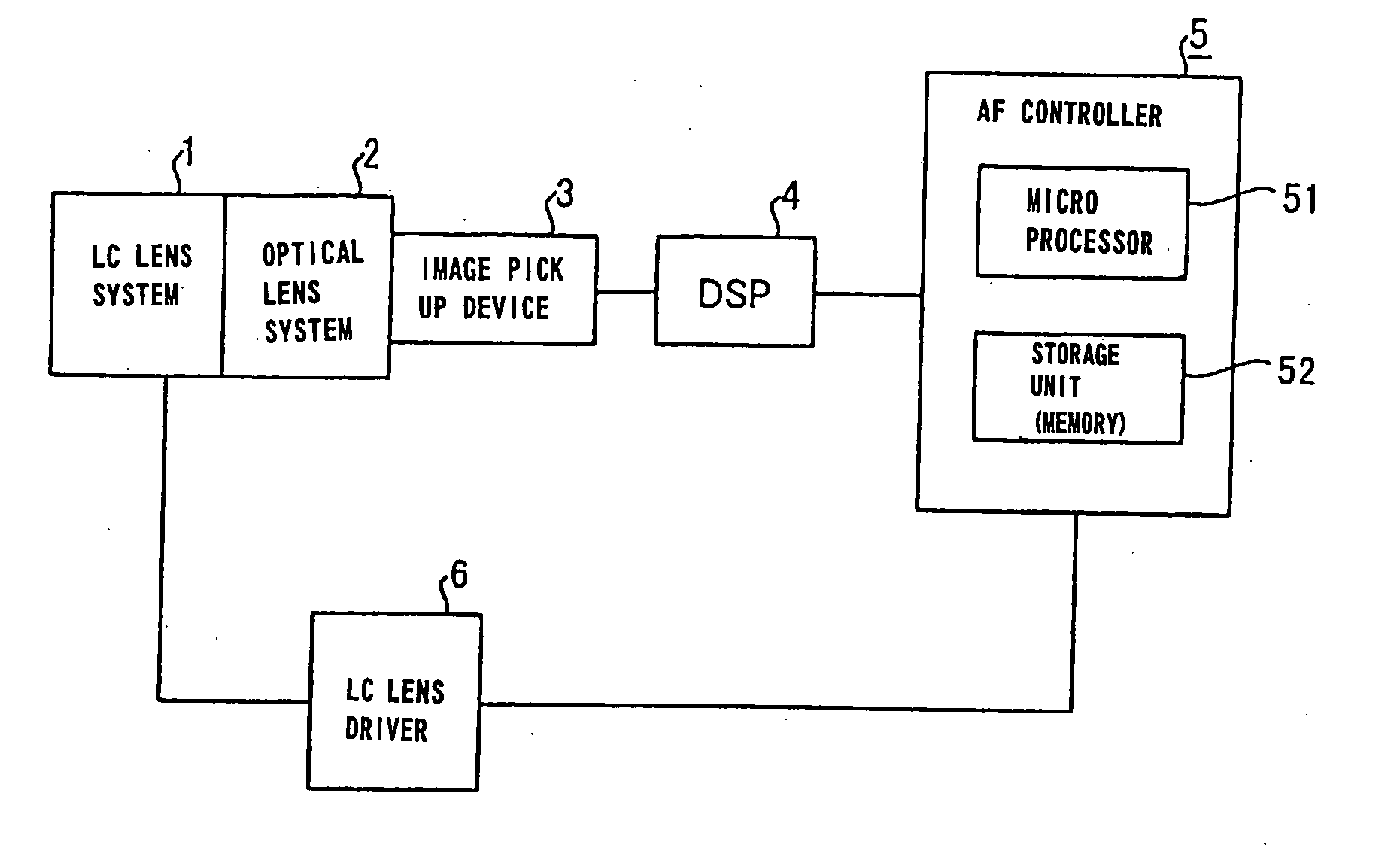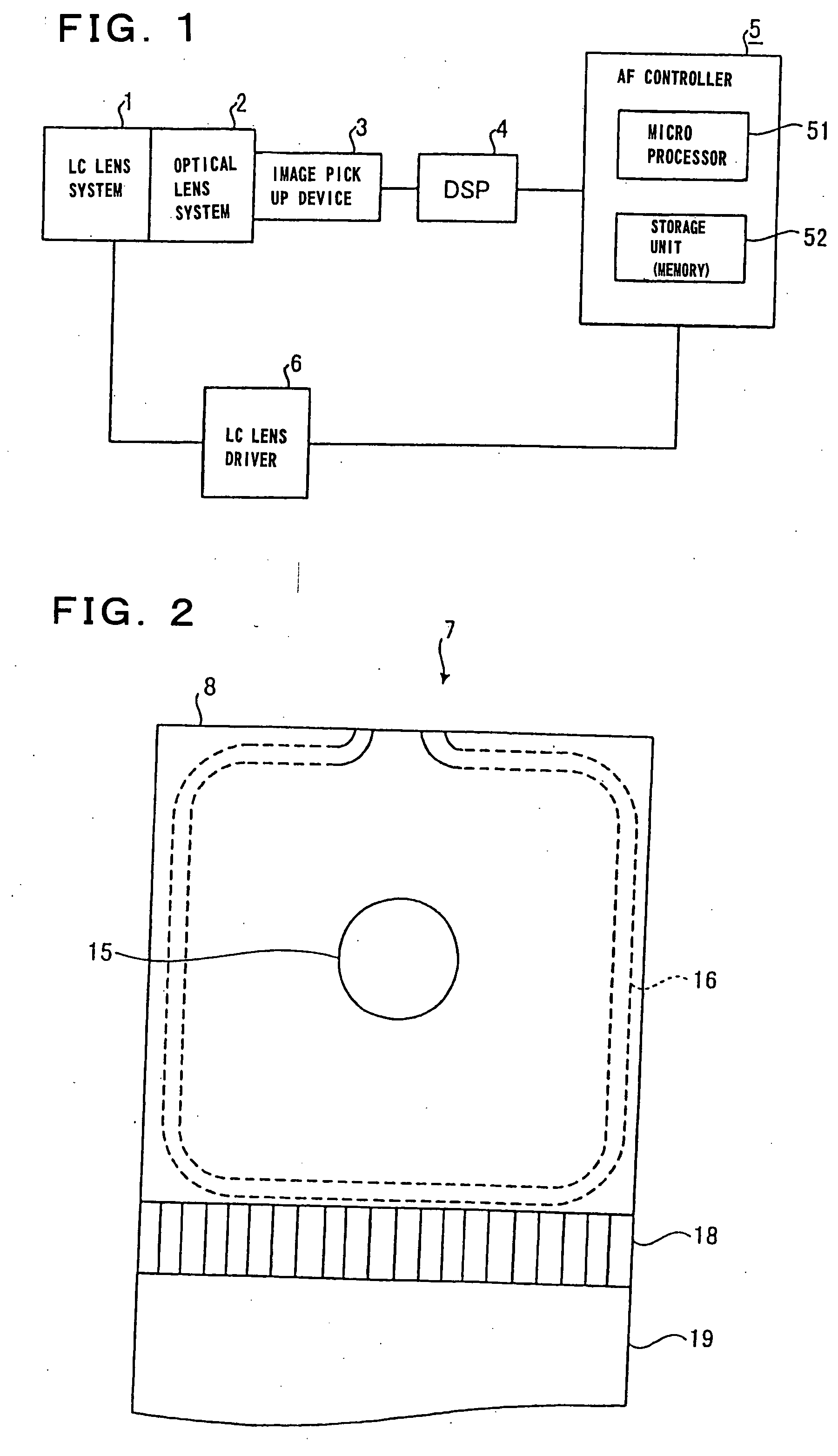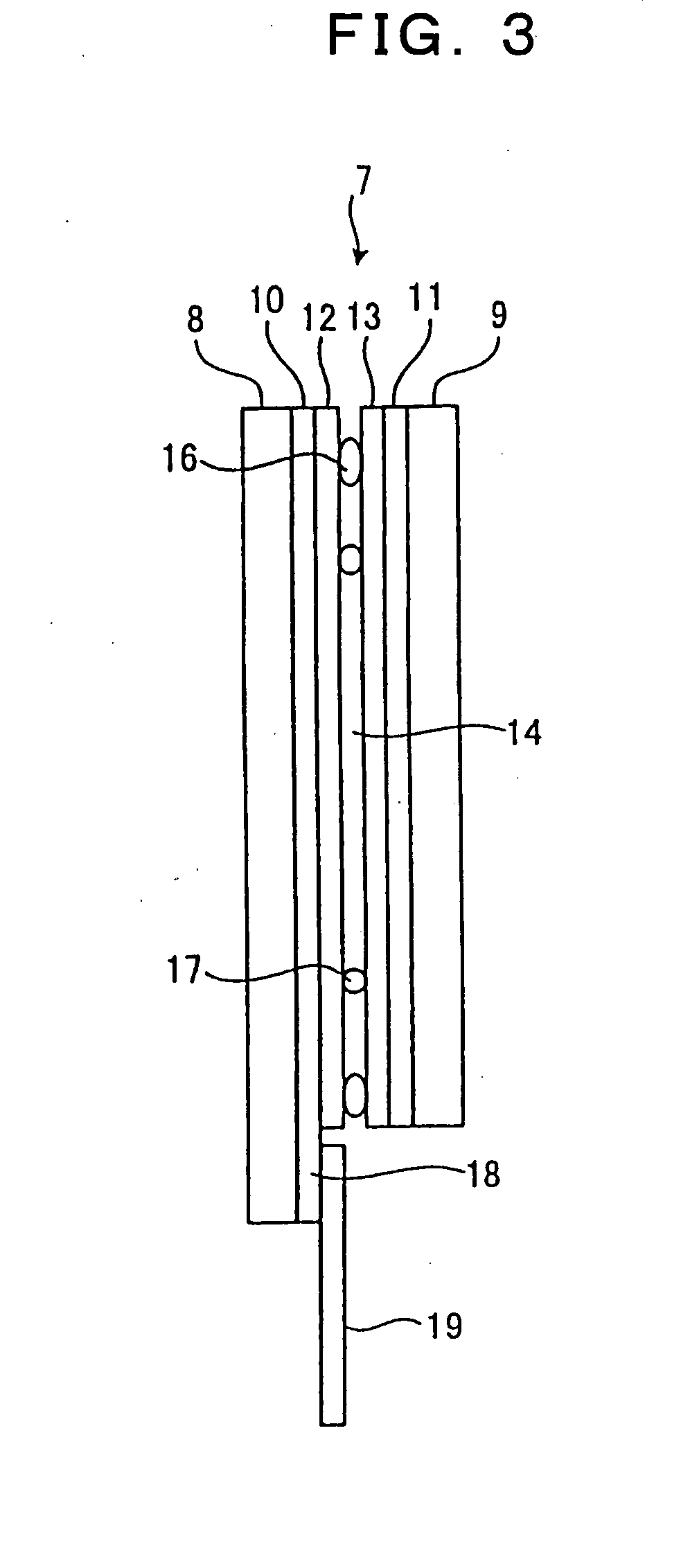Automatic focusing apparatus
a focusing apparatus and automatic technology, applied in the direction of camera focusing arrangement, printers, instruments, etc., can solve the problems of comparatively high electric power, low shock resistance, complicated mechanism, etc., and achieve the effect of sufficient speed and precision
- Summary
- Abstract
- Description
- Claims
- Application Information
AI Technical Summary
Benefits of technology
Problems solved by technology
Method used
Image
Examples
first embodiment
[0084] In this way, it takes a certain period of time for the liquid crystal to complete the transient response operation. Thus, in the first embodiment, the image signals generated from the optical images which have passed through the liquid crystal lens system 1 and the optical lens system 2 are sampled with a predetermined cycle during the transient response operation period of the liquid crystal. In FIG. 6, the processes of the changes in the refractive index of the liquid crystal and in the focal length of the liquid crystal lens 7 during the transient response operation period tf upon the rise of the driving voltage are shown.
[0085] For example, as shown in FIG. 6, the refractive index of the liquid crystal changes during the transient response operation period tf and becomes constant after the transient response operation period tf has passed, so that the refractive index of the part of the liquid crystal corresponding to the core electrode 20, to each of the ring electrodes ...
fourth embodiment
[0191] Here, control of the liquid crystal lens system 1 in the automatic focusing apparatus according to the embodiment is explained. Here, the change in the refractive index when voltage is applied to liquid crystal in a condition that the light with the polarization plane in the same direction as the alignment direction of the liquid crystal is passing through the liquid crystal is the same as that of the fourth embodiment shown in FIG. 25, therefore, explanation thereof is omitted. However, it is different from the embodiment on the point that the driving voltages V1, V2, and V3 in FIG. 25 are the pulse width modulated (PWM) alternating voltages, for example.
[0192] Next, the pulse width modulated (PWM) waveforms are shown in FIG. 30. The waveform corresponding to the driving voltage V1 with the smallest effective voltage is shown in upper side portion, the waveform corresponding to the driving voltage V2 with the largest effective voltage is shown in lower side portion, and the ...
second embodiment
[0204]FIG. 32 is a flowchart of the autofocus operation according to this embodiment, which is performed by the microprocessor 51 of the controller 5 in FIG. 1. In this flowchart and the flowchart in a second embodiment and the following explanation, “Step” is abbreviated to “S.”
[0205] The processing shown in FIG. 32 is started taking, as a trigger, the initial press of the shutter button of the image pickup apparatus such as a camera or the like incorporating this automatic focusing apparatus. The CMOS sensor corresponding to the image pickup device 3 shown in FIG. 1 is initialized first in S101 to set the number of frames and the number of pixels. Note that the setting of the number of frames and the number of pixels may be done in advance as an image pickup condition before the pressing of the button of the image pickup apparatus.
[0206] In the subsequent S102, the area from which the focus signal is extracted of an optical image formed passed through the optical lens unit includ...
PUM
| Property | Measurement | Unit |
|---|---|---|
| length | aaaaa | aaaaa |
| thicknesses | aaaaa | aaaaa |
| thickness | aaaaa | aaaaa |
Abstract
Description
Claims
Application Information
 Login to View More
Login to View More - R&D
- Intellectual Property
- Life Sciences
- Materials
- Tech Scout
- Unparalleled Data Quality
- Higher Quality Content
- 60% Fewer Hallucinations
Browse by: Latest US Patents, China's latest patents, Technical Efficacy Thesaurus, Application Domain, Technology Topic, Popular Technical Reports.
© 2025 PatSnap. All rights reserved.Legal|Privacy policy|Modern Slavery Act Transparency Statement|Sitemap|About US| Contact US: help@patsnap.com



